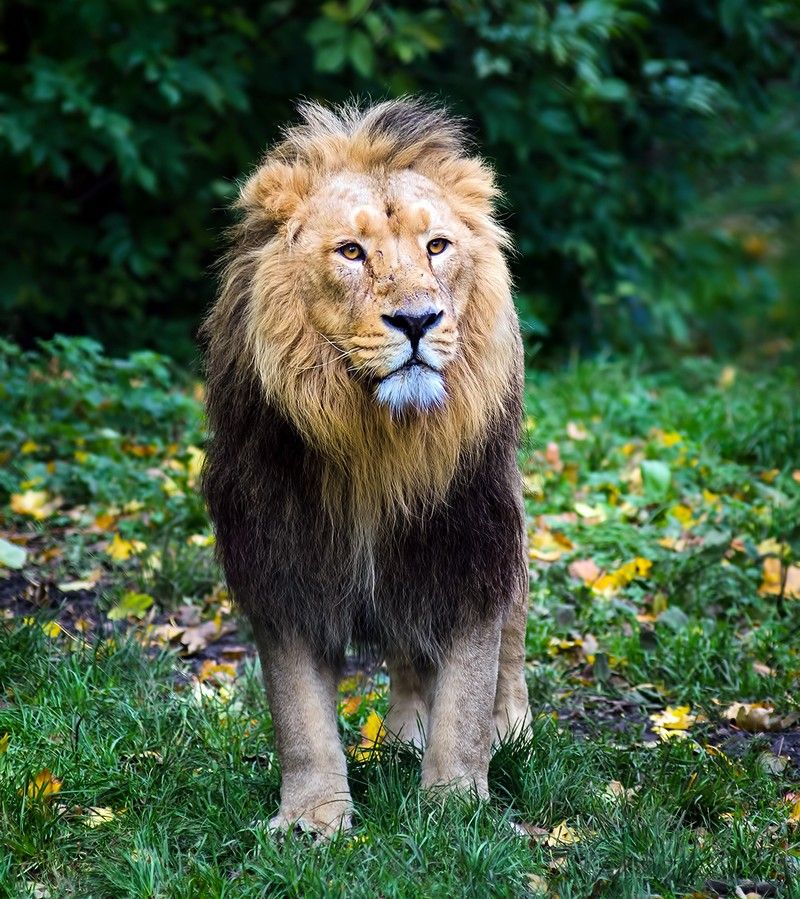Asiatic Lion – History, Facts, Significance, and Impact
Introduction
The Asiatic lion (Panthera leo persica), also known as the Indian lion or Persian lion, is a majestic big cat that once roamed across the Middle East, Persia (Iran), and large parts of India. Today, this rare subspecies survives only in the Gir Forest of Gujarat, India, making it one of the most important symbols of India’s wildlife heritage. Known for its muscular build, short mane, and powerful roar, the Asiatic lion has been a part of Indian culture, history, and mythology for thousands of years.
History of the Asiatic Lion
Ancient Presence: Archaeological evidence and ancient texts indicate that Asiatic lions once roamed from Greece to India.
Mythological Connections: Lions are deeply rooted in Indian mythology, appearing in Hinduism, Buddhism, and Jainism. Lord Vishnu’s Narasimha avatar (half-lion, half-man) is one of the most revered depictions.
Royal Symbol: Throughout history, lions symbolized power, courage, and protection. The Lion Capital of Ashoka (now India’s national emblem) features four Asiatic lions.
Decline: By the late 19th century, hunting, deforestation, and loss of prey reduced their population to fewer than 20 lions.
Conservation Efforts: The Nawab of Junagadh began protection in the early 1900s. Since then, the Indian government and Gujarat Forest Department have worked tirelessly to revive their numbers.
Key Facts about the Asiatic Lion
Scientific Name – Panthera leo persica
Current Habitat – Gir Forest National Park and surrounding areas in Gujarat, India.
Population – As per the latest census (2020), about 674 lions exist in the wild.
Physical Features – Smaller mane than African lions, allowing ears to be visible; a fold of skin runs along the belly (a unique feature).
Diet – Primarily deer, antelope, wild boar, and sometimes livestock.
Social Structure – Males live in smaller groups, unlike African lions that form large prides.
Status – Listed as Endangered on the IUCN Red List.
Timeline of the Asiatic Lion
Ancient Times – Found across Asia, Middle East, and North Africa.
4th Century BCE – Mentioned in Greek and Indian historical records.
10th–18th Century – Thrived across Northern and Central India.
Late 1800s – Near extinction due to hunting and habitat loss.
1900s – Protection begins under Nawab of Junagadh.
1975 – Gir Forest declared a sanctuary.
2020 – Population rises to over 600, spreading beyond Gir.
Significance of the Asiatic Lion
Cultural Symbol – Represents strength, courage, and dignity in Indian traditions.
National Emblem – The Lion Capital of Ashoka features four Asiatic lions, symbolizing truth, peace, and power.
Tourism – Gir National Park attracts thousands of wildlife lovers, supporting Gujarat’s economy.
Ecological Role – As apex predators, they maintain the balance of the ecosystem by controlling herbivore populations.
Conservation Efforts
Strict Laws – Hunting lions is banned in India.
Habitat Expansion – Plans to relocate some lions to Madhya Pradesh for safety against epidemics.
Community Participation – Local Maldhari tribes coexist with lions, often grazing cattle in the same forest.
Rescue and Treatment – Wildlife rescue centers in Gir treat injured lions.
Wishing for Asiatic Lion Awareness
“May the roar of the Asiatic lion forever echo in our forests, reminding us of nature’s power and our duty to protect it.” 🦁
Importance in Our Life and Society
The Asiatic lion is more than a wild animal—it is a symbol of resilience. Its survival story teaches us that dedication, conservation, and coexistence can save even the rarest species. Protecting them ensures biodiversity, eco-tourism growth, and a deep cultural connection for future generations.
Conclusion
From the brink of extinction to a remarkable comeback, the Asiatic lion’s journey is an inspiring tale of survival. As the pride of India’s wildlife, it reminds us that every species plays a crucial role in maintaining Earth’s balance. Preserving the Asiatic lion is not just about saving a species—it’s about safeguarding our heritage, environment, and the wild spirit of India.








